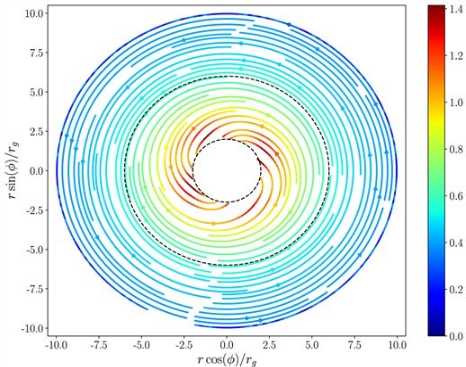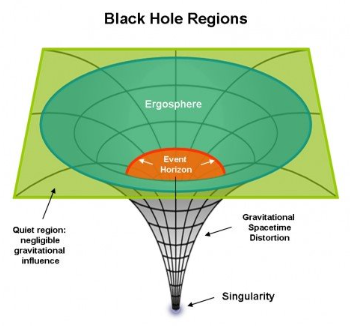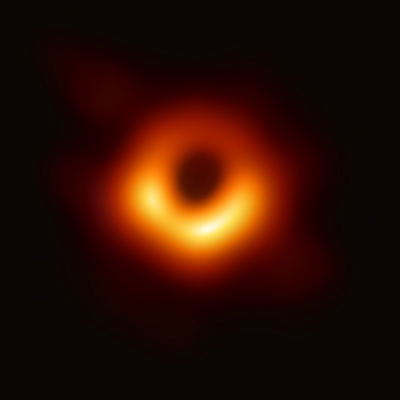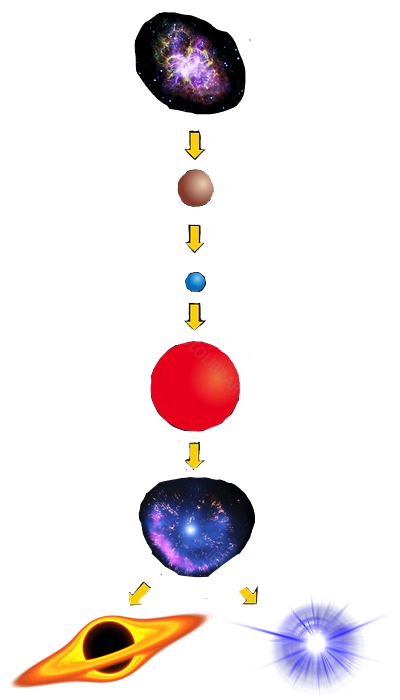Black Hole Facts!!
Black holes don't emit any light and rather draw it in, and the pupil of your eye also does that,
so it's like the pupils of our eyes are mini black holes!!

Orbits
A black hole has incredibly strong gravity and so has a very wide range of orbital paths around it that an object can follow. Much of this range gives the object a stable circular orbit around the black hole with no danger of being pulled in, which is how the crew's ship- the Endurance- is able to orbit it for as long as it does in the movie. However, there comes a point where objects will have an unstable orbit and will start to be pulled in towards the centre of the black hole (more on that later).
According to an interview Kip Thorne had with Niel DeGrasse Tyson, Miller's planet would have to be just barely keeping a stable circular orbit to be as intensely affected by Gargantua's gravity as it is in the movie.
There are two parts of a black hole important to our project: the Event Horizon and the Singularity.
The Event Horizon is the point at which the escape velocity is equal to the speed of light. The point of no return, if you will. This makes up the visible black part of a black hole and is where, if something were to be pulled into a black hole, an outside observer would see the object stop.
The Singularity is the one-dimensional centre of a black hole where, as Kip Thorne puts it in an article, all laws of physics break down. All matter past the Event Horizon is pulled into it and is stretched out and spaghettified until (presumably) losing dimensionality entirely.

Event Horizon:
The point at which escape velocity is equal to the speed of light. The Point of No Return, if you will. This is where, if something is pulled into a black hole's unstable orbit, an outside observer would see it "stop" because here, the black hole's spin is so great that time stops entirely.
Singularity:
The one-dimensional centre of a black hole where, as Kip Thorne puts it, "all laws of physics break down". Everything past the Event Horizon is pulled infinitely into the Singularity

This is a real photo of a black hole that's actually a false-colour image created from radio waves, specifically at a wavelength of 1 millimeter. The bright ring in the image is actually the shadow of the black hole, created by light from the surrounding accretion disk being bent by the black hole's gravity. Another example of the extraordinary power of black holes bending spacetime!

Life Cycle
Before a black hole becomes a black hole, initially it begins it's life as a star.
A star is essentially a luminous celestial body of hot gas, glowing from its own internal energy sources. Inside the star, nuclear fusion occurs, in which hydrogen atoms collide to form helium, releasing energy which heats it. This heat causes the star to expand outwards, however this is counteracted by the force of gravity pushing downwards.
Stars form from clouds of dust and gas called nebulae (singular: nebula). Within the nebula something triggers the dust to collect and build up sufficiently enough to collapse under its own gravity. As it collapses, the centre begins to heat up, and soon forms a dense, hot core inside a protostar. This gathers more dust around it, which may form planets as time goes on.
Normal stars are generally known as main-sequence stars. Most stars fall into this category. Stars which are in this category tend to show a strong positive correlation between their luminosity and their surface temperature.
The hottest, biggest, and most luminous stars (hypergiants) have shorter lifespans, with lifetimes of only a few million years. These make up very few of the stars that we know of. On the other hand, smaller stars which are less luminous and less hot have very long lifespans (billions of years). Most stars tend to live this long.
The death of a star
At the end of a star's life, its 'death' depends on its size. All stars eventually run out of fuel, and therefore cannot combat the effects of gravity any longer. This causes them to rapidly collapse, which also increases the heat. Smaller stars (such as our Sun) then begin to rapidly expand, forming a red giant. For our solar system, this will swallow the Earth as well. For smaller stars, the red giant will soon collapse once more, forming a white dwarf - a hot yet not very luminous star.
Larger stars
Larger stars are the stars that actually have the potential of becoming a black hole. Stars which are over eight solar masses similarly form a red supergiant - high luminousity stars with lower temperatures. However, instead of simply collapsing, they explode in what's though of as one of the most violent events in the universe. A supernova. This is when the star's core rapidly collapses and then bursts in a bright explosion. Once the supernova fades out, the star's fate depends on the mass of its core.
Neutron stars
Neutron stars form when the exploding core is between 1.4 to 3 solar masses. The star collapses to a point where it becomes so dense that even the repulsion between protons and electrons can't withstand it, so they combine to form neutrons (hence the name). It is so incredibly dense that one teaspoon of neutron star is 10 billion tonnes. As a result, the gravity at the surface is very strong too. In addition, neutron stars have very strong magnetic fields, which accelerate atomic particles around their poles, leading to powerful spinning beams of radiation.
Black holes
If the star core was over 3 stellar masses, a black hole will form. This is an infinitely dense object with gravity that is so strong the not even light can escape it. As a result, black holes must be detected through the X-rays and gamma rays emitted when it is consuming matter, forming an incredibly hot disc around the black hole. Black holes eventually fizzle out (in a way), as they are constantly emitting Hawking radiation.
